#roman rituals
Text
This is my Roman Empire
#happygaytimes#the band ghost#ghost bc#shitghosting#ghost#nameless ghoulette#nameless ghoul#cirrus ghoulette#cirrus#ritual#Roman empire#I wanna bewitch queue
685 notes
·
View notes
Text

woof woof……
#this was Supposed to be the peter thingy but#I for some reason just could not draw him happy pshh#so serious I tried but to no avail#intricate rituals…..#roman roy#roman#succession#hbo succession#art#fanart#my art
262 notes
·
View notes
Text

Pompa Circensis by Julio Borrell Pla
#pompa circensis#art#julio borrell pla#ancient rome#chariot#chariots#quadriga#chariot racing#chariot race#chariot races#circus maximus#roman republic#roman#romans#games#racing#races#charioteer#charioteers#arena#classical antiquity#procession#parade#festival#history#europe#european#pageant#ritual#religious
63 notes
·
View notes
Text
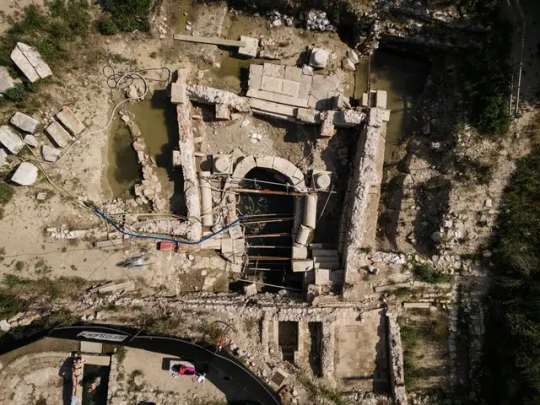


These Bronze Statues Reveal Ancient Healing Rituals
Discovered in a dig at a thermal spring in Tuscany, Italy, the well-preserved items offer a glimpse into medical practices from the Etruscan and Roman eras.
An exhibition that opened Friday at Rome’s Quirinal Palace could be described as a classic rags-to-riches story.
Just ten months ago, many of the bronze statues now on show there — artfully spotlighted and captioned — were submerged in layers of thick mud in what had been a sacred pool of thermo-mineral water roughly halfway between Florence and Rome.
Their rediscovery last fall during an ongoing archaeological excavation in a field just below the Tuscan town of San Casciano dei Bagni made headlines around the world, propelling the bronzes — via a stint in Italy’s main restoration institute — to the rare honor of being exhibited at the presidential palace.
“It’s an extraordinary discovery,” Luigi La Rocca, the culture ministry official responsible for archaeology, fine arts and landscape, told reporters at the palace on Thursday, praising the variety of the bronzes, their quality and their high degree of conservation.
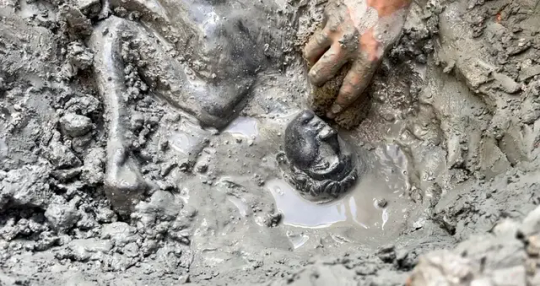
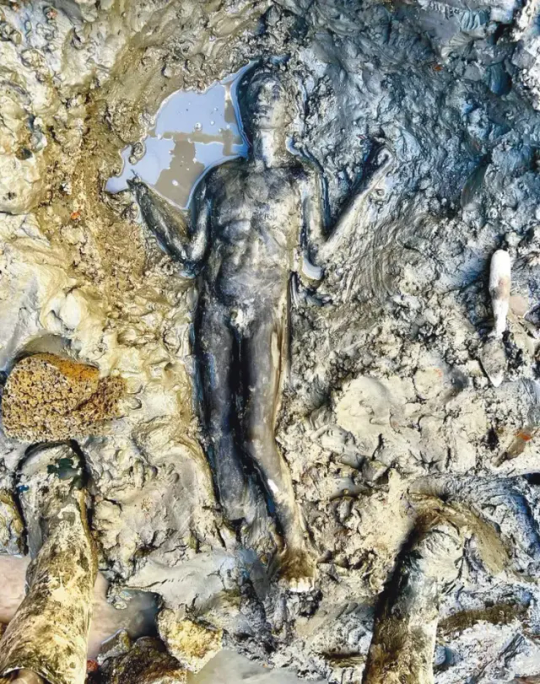
The artifacts — mostly dating from the second century B.C. to the first century A.D. — were votive offerings collected in the sacred pool of the so-called Bagno Grande, or “large bath,” part of a sanctuary that was in use in various forms for more than 700 years.
Lightning struck the building around the first century A.D., and following the Etruscan tradition of burying objects struck by lightning in a sacred place, the statues and other artifacts were concealed under a layer of terra-cotta tiles along with a bronze thunderbolt, a ritual called “fulgur conditum.”
Successive votive offerings, mostly bronze coins and plants, were deposited until Christianity became the official religion of the Roman Empire in the fourth century A.D. Then, the sanctuary was dismantled, and its offerings were buried once again, which contributed to their remarkable conservation.
The dig that uncovered them began in 2019, but it was only in 2020 that the first artifacts — inscriptions, altars and small bronzes — began to emerge. Last year, the archaeologists dug further down into the sacred pool.
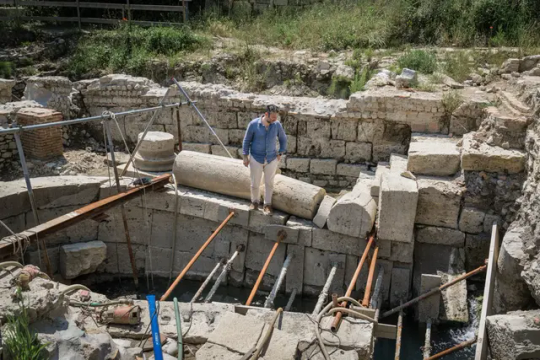
“We thought there could be something here, but nothing like what we found,” said Emanuele Mariotti, the director of the excavation, on a recent hot afternoon as he surveyed the site. “It was like a time capsule waiting to be opened,” he added.
The finds offer insights on ancient medical practices. The waters were considered curative by “Etruscans, Romans, Christians and Pagans,” Mariotti said. “This was a place of healing, meeting of cultures and medical knowledge.”
Many of the bronzes had inscriptions from the territory of Perugia, about 70 kilometers northeast of San Casciano, a considerable distance to travel more than 2,000 years ago. This shows “how complex and nuanced” cultural interaction was at the time, added Jacopo Tabolli, the scientific director of the dig and co-curator of the Quirinal show.
“Gods changed, but the water remained the same,” he added.
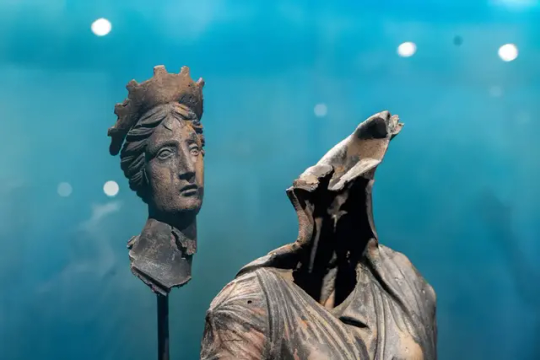

Some of the bronzes are still being restored, but many made it to the Quirinal for the exhibition. In one room, bronzes of arms, feet, ears and other body parts are on display, reflecting the various ailments that were treated at the thermal baths.
“These are unique,” Mariotti said, stopping in front of two bronze plaques showing what he said was a “very accurate” depiction of internal organs. Similar terra-cotta examples existed, he said, but bronze versions were hitherto unknown.
Other statues represented gods and goddesses, but also men, women and small children, wrapped in swaddling cloths. Some were sickly and in need of healing. Others appeared to have benefited from the cures.


The thermal springs are still used today for their therapeutic properties, both in the public baths near the archaeological site and at a private resort.
For San Casciano dei Bagni, a picturesque hilltop town, the ancient finds will hopefully bring new economic prospects, especially after the opening of a new museum in the city center.
Earlier this week, at a property deed transfer in Rome attended by various authorities, the culture ministry formally bought a palazzo in San Casciano dei Bagni from local clerics to house the museum (list price 670,000 euros, around $730,000) and Italy’s culture minister, Gennaro Sangiuliano, pledged to contribute “additional resources.”

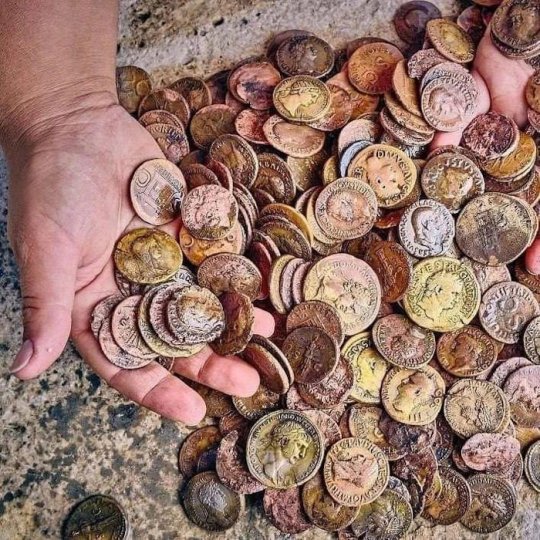

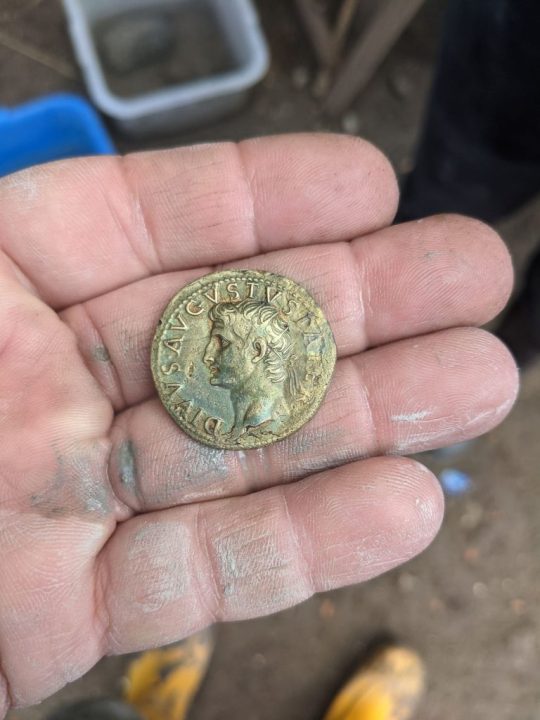
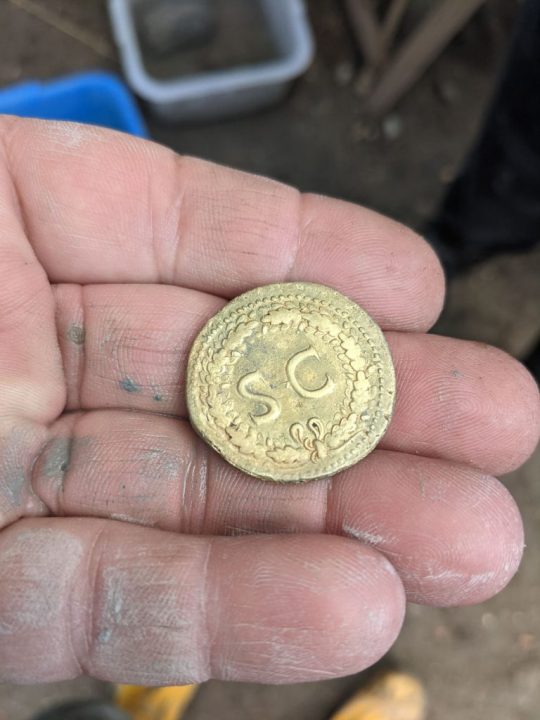

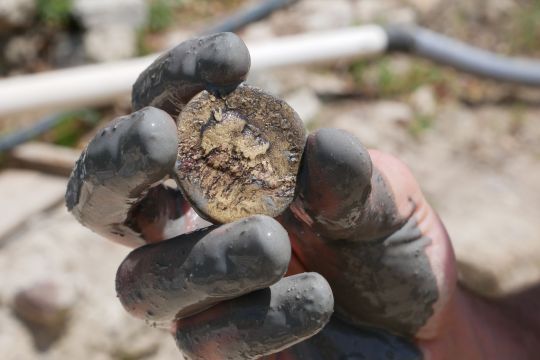
Massimo Osanna, the director of Italy’s state museums said Thursday that he hoped one section of the museum would be ready next year. “I’m an optimist,” he said.
“It’s going to be a tremendous opportunity,” said Agnese Carletti, the town’s mayor. Following on from previous administrations, Carletti’s council championed and funded the local archaeological excavations that led to the finds, offering room and board to archaeology students participating in the summer digs.
A new excavation begins next week, and Tabolli said that it would concentrate on expanding the archaeological site to better understand the context around the sacred pool. “We’ve reconstructed the structure of the sanctuary, but there is still much more to know about the overall site which must have been monumental,” he said.
Osanna said that more surprises could be in store. “We don’t know what else the sanctuary has to offer,” he said.
By Elisabetta Povoledo.
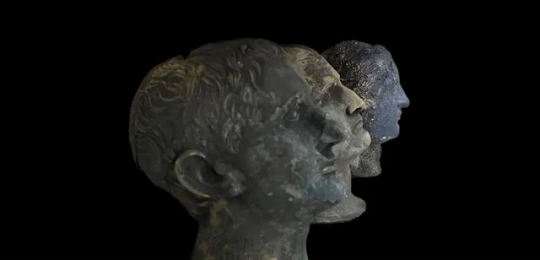



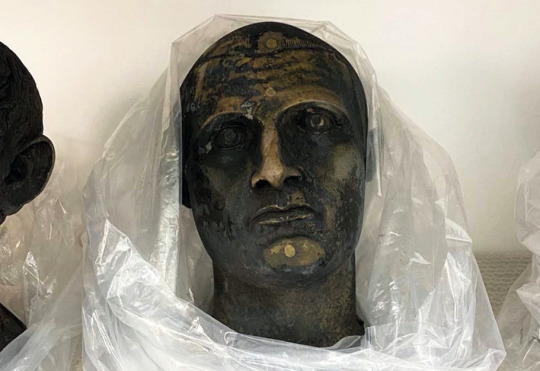

#These Bronze Statues Reveal Ancient Healing Rituals#Etruscan And Roman Treasure Trove Unearthed In San Casciano dei Bagni#bronze#bronze statues#bronze sculpture#roman coins#ancient artifacts#archeology#archeolgst#history#history news#ancient history#ancient culture#ancient civilizations#roman history#roman empire#etruscan history#etruscan art#roman art#ancient art#long reads
126 notes
·
View notes
Text

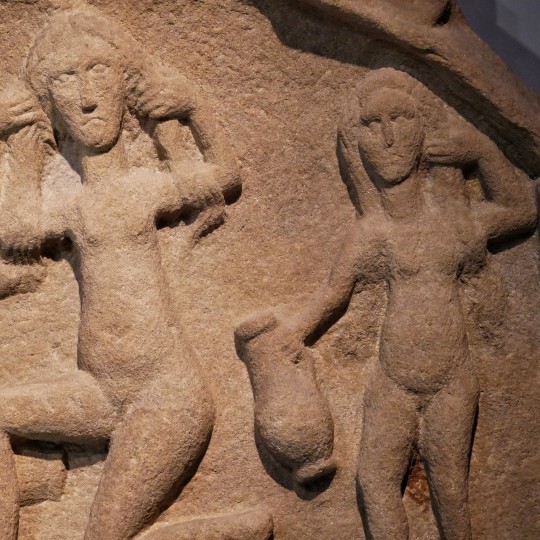

Roman Relief From A Water Tank Depicting Venus Bathing With Attendants, Great North Museum, Hancock, Newcastle upon Tyne
#roman#roman living#roman goddess#romans#roman art#roman belief#roman design#stone carving#archaeology#relic#ritual#roman culture#ancient craft#ancient living#ancient cultures#Newcastle
48 notes
·
View notes
Text
I can't believe Roman's plan to get the girl is to drag her onto early morning runs
#divine rivals#rebecca ross#roman c kitt#iris#roman x iris#what kind of messed up runner ritual is this???
26 notes
·
View notes
Text
@basicallymayah on TikTok: local man is BEGGING to be dicked down #succession
#succession#roman roy#stewy hosseini#video#this person including stewy in Roman's gay rituals montage...i think they truly understand me
82 notes
·
View notes
Text
In the bizarre world of ancient festivals, our list reveals the darker side of historical celebrations, from bloodletting to stoning outcasts. Discover the strange customs that once defined festivities in ways you never imagined.
19 notes
·
View notes
Text
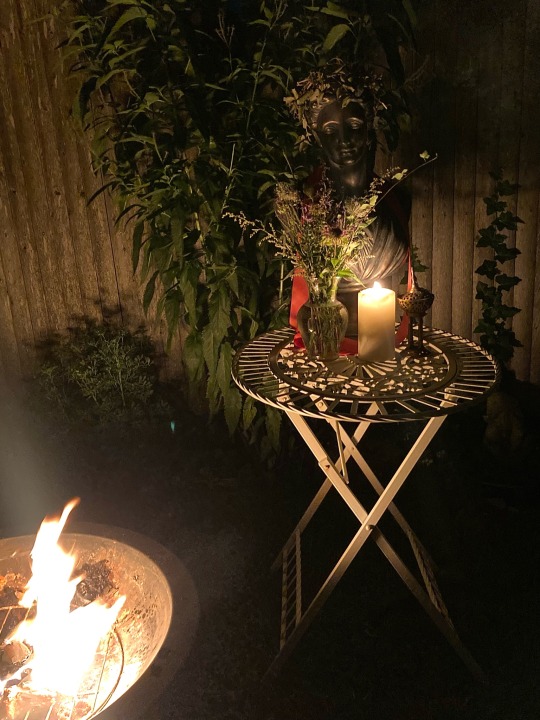

Another lovely Nemoralia; the first time I've celebrated on a blue moon. Clearly I'm a little behind on my posting.
It was lovely to see so many people spending time with the moon that night in their own personal ways.
🌕
🦌
🔥
#Nemoralia#diana#polytheism#August#ritual#Roman#Roman polytheism#ancient religion#religion#moon#magic
28 notes
·
View notes
Text
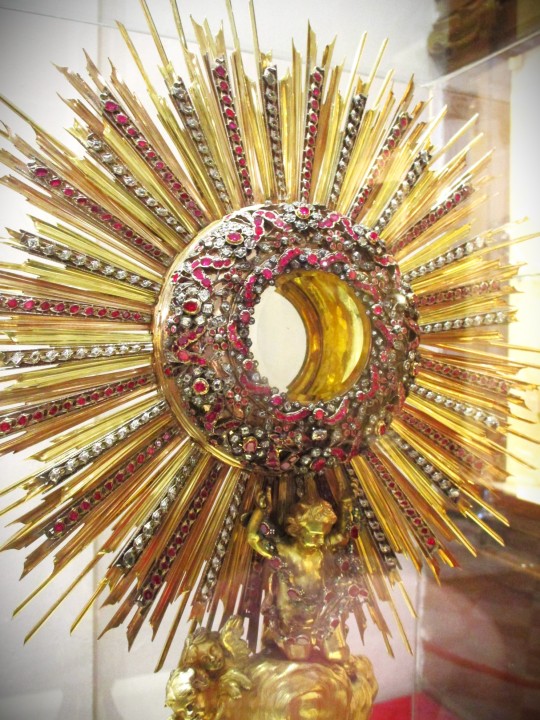

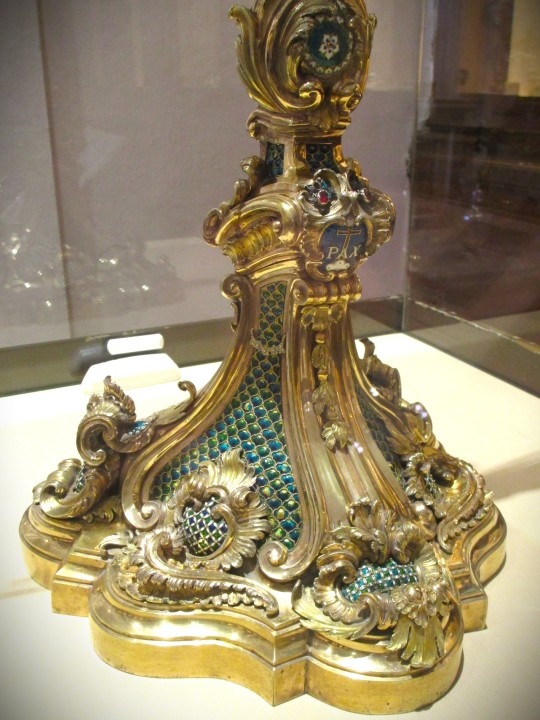
Monstrance, 1775, gold, silver, gilded silver, enamels, rubies and diamonds, by Agostino Natoli and Salvatore Mercurio
Photo by Charles Reeza in the treasury of Palermo Cathedral
#goldsmithing#jewelry#treasure#Baroque art#ritual object#eucharistic adoration#Roman Catholic church
27 notes
·
View notes
Text



vs JKH GKS Jastrzębie, 30.12.2023
#ah the beautiful game of hockey#bartosz ciura#filip komorski#roman rác#gks tychy#puchar polski#phl#the rituals~#the guys were diving like mad#ngl it was embarassing#you're watching too much football boys!
8 notes
·
View notes
Text
It’s a whole four-ish sentences, alongside some forwarded paperwork, and it reads:
Congratulations, Roman. This is a great opportunity for you. Looking forward to seeing what you make of it. Good luck.
Fuck. Shit fuck. What?
It’s so fucking sick that he almost turns to the also-now-defunct sibs group chat to ask Hey, did Gerri ever send you guys professional well wishes or do you think she actually used to sort of believe in me?
#succession#romangerri#YIPPEE! WAHOO!#sorry guys writing about roman got so out of hand that i had to postpone more sexy phone calls. but fear not#more of that soon 🙏#idk why i'm so addicted to recreating their texts and emails#probably forever chasing the high of 'i am going to kill myself' '👍'#most important intricate ritual to me#my fic
14 notes
·
View notes
Text
A recent finding in Mallen (a town of Zaragoza, Aragon) shows a beheaded lamb, five children burials and a chicken with a brazen needle through his skull. All of this dates to the II a.D, so during Imperial Rome. The experts tell that could be a ritual burial or a curse of some sort.

#ritual#aragon#archaelogy#roman empire#black magic#zaragoza#sorcery#burials#sacrifice#mallen#funerary rites#curses
19 notes
·
View notes
Text
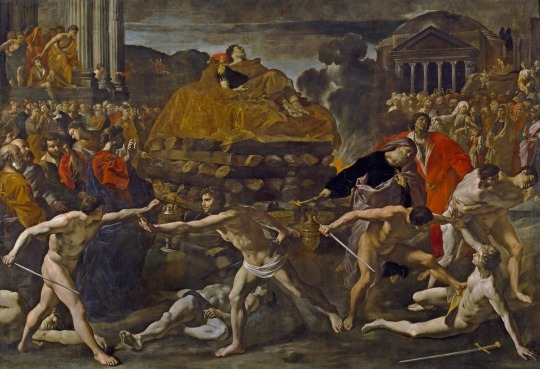
Funeral Rites for a Roman Emperor by Giovanni Lanfranco
#funeral#rites#roman#emperor#art#giovanni lanfranco#history#ancient rome#rome#antiquity#ancient#romans#europe#european#ancient roman#funerals#ritual#rituals#cremation#religious#religion
114 notes
·
View notes
Text
anyone else w ocd have a thing where its like. you have one or two themes that freak you out the most and can send you into panic attack levels of fear, but then you have a few in the background that always stay at a super chill level despite the fact that you can't get out of the compulsion. like youre not even properly AFRAID you just do the thing Just Cuz because not doing it feels like a reversal of gravity. like the 'mildly thirsty so i take a sip of water' of ocd themes as opposed to the ones that are more like dying of thirst chugging anything u can get your hands on if that makes sense
#its annoying because its like ok well why am i still doing it then#i think certain things for me just make me shrug and go 'you got me there' right away and thats all there is to it#bc they cant really escalate beyond that naturally and instead they just pop up here and there and i do the thing and thats all it is#meanwhile the ones that terrify me the most are the 'unsolveable' ones or more complex ones that can branch more aggressively#like opening and closing a door over and over to check if a light is Really Off..simple. nowhere to go with that really#building a whole fucked up system of rituals designed to defend against THe Ghosts And Demons with rules my brain just makes up?#that will be my ocd's roman empire for months guaranteed (actually happened)#ocd
2 notes
·
View notes
Text

Stone Carved Trophy Head Of A Warrior Taken In Battle, 2nd Century CE, Wroxeter Roman City, Shrewsbury, Shropshire
#stone head#trophy#battle trophy#iron age#stone carving#archaeology#relic#ritual#symbols#ancient craft#ancient cultures#ancient living#Wroxeter#roman living#roman empire#roman art
48 notes
·
View notes